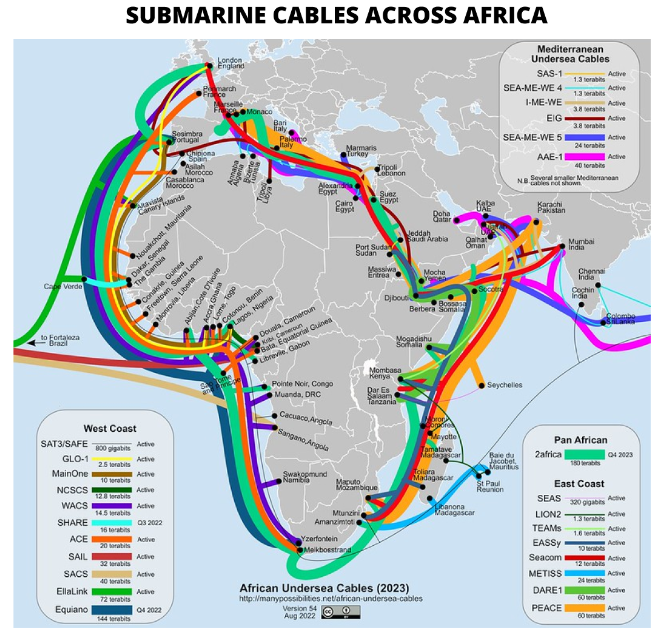A significant internet outage has struck East Africa, affecting over 80 million users across multiple countries. The disruption stems from faults in several undersea cables crucial for internet and telecoms infrastructure in the region.
One confirmed cable break occurred 42 kilometers from the Mtunzini Cable Landing Station in South Africa, impacting systems reliant on the SAFE and EASSy cables. Repair efforts are underway, with services being optimized where possible. Additionally, the Eassy cable system experienced a cut between South Africa and Mozambique.
The Mtunzini Cable Landing Station is owned by Telkom South Africa, while another station owned by Liquid Telecom (Neotel) serves as the landing point for SEACOM.

Ben Roberts, Liquid Telecom’s Chief Technology and Information Officer, confirmed faults in the Eastern Africa Submarine Cable System (EASSy), a critical 10,000km undersea line supporting internet connectivity for numerous landlocked nations in East Africa. Roberts also noted damage to SEACOM, a 17,000km submarine cable linking several countries.
The outage has led to slow speeds and downtime, exposing the region’s reliance on undersea cables. The disruption has significant economic implications until the cable systems are restored. Previous damage to other subsea cables in the Red Sea remains unrepaired.
Furthermore, users of Starlink services faced challenges due to a geomagnetic storm affecting the network. Elon Musk, CEO of SpaceX, acknowledged the storm’s impact on Starlink satellites via Twitter.
Major geomagnetic solar storm happening right now. Biggest in a long time. Starlink satellites are under a lot of pressure, but holding up so far. pic.twitter.com/TrEv5Acli2
— Elon Musk (@elonmusk) May 11, 2024
Users continue to experience degraded services, with uncertainty about when normalcy will return. The U.S. government issued a severe geomagnetic storm watch, emphasizing the risk posed by solar activity.
